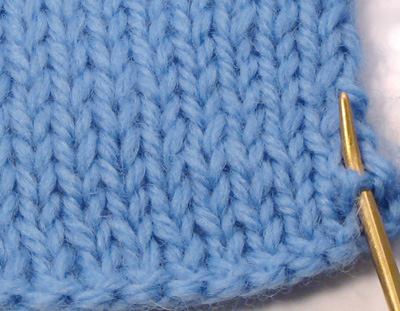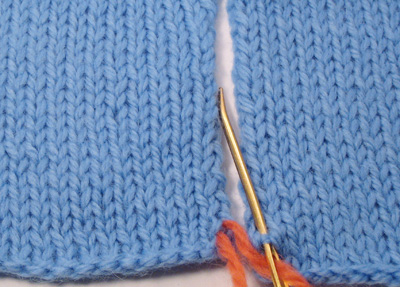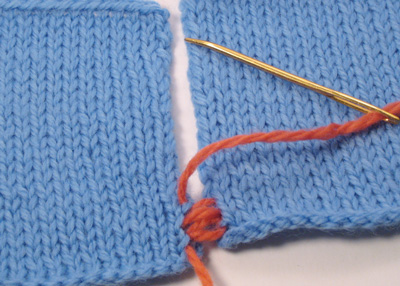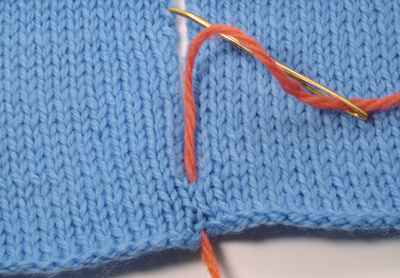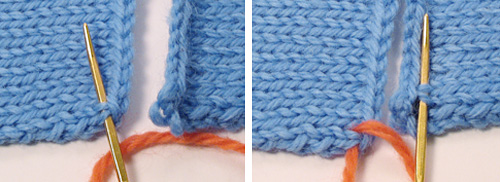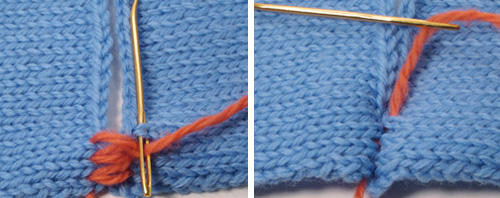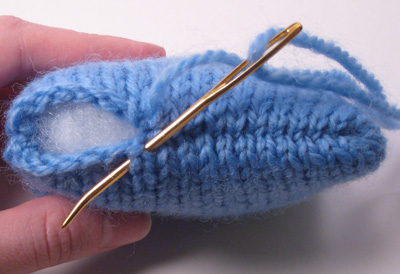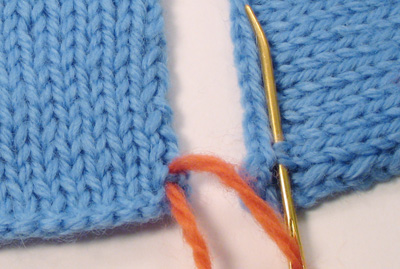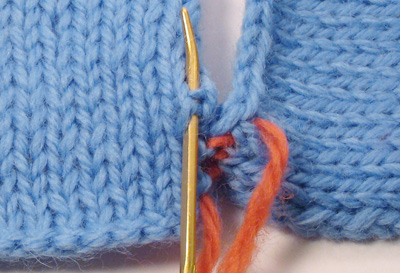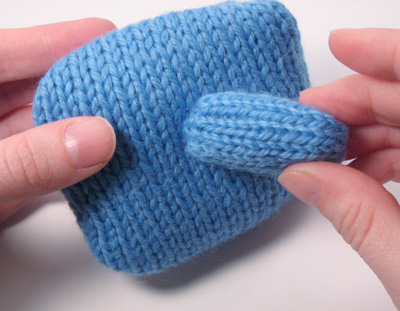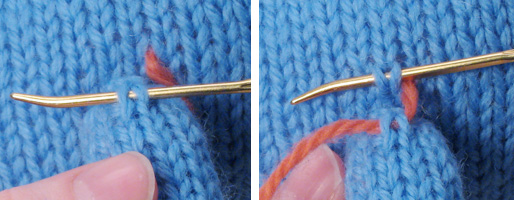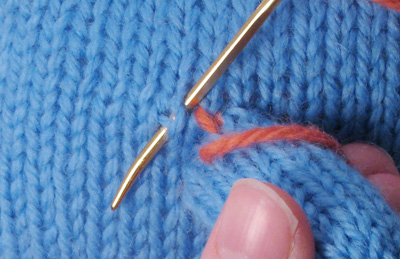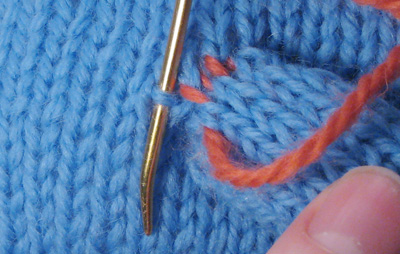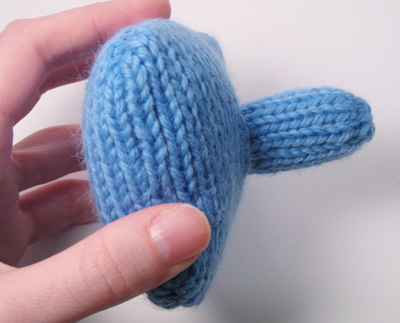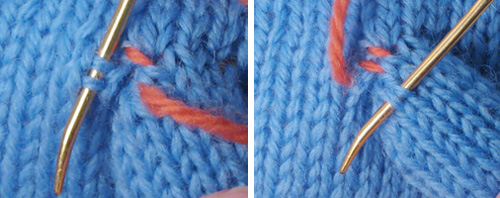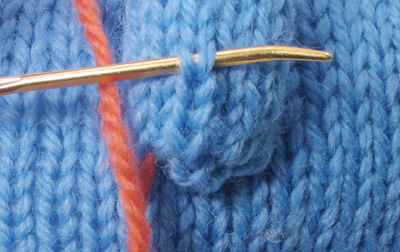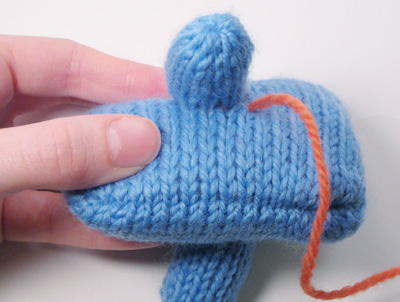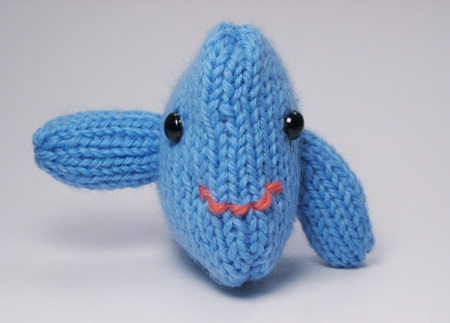Circular or double-pointed? Metal or wood? How big and how long? Choosing the right knitting needles for your project can be tricky, especially when it comes to knitted toys. So I’ve put together this little guide to break down the choices for you and share my own preferences.
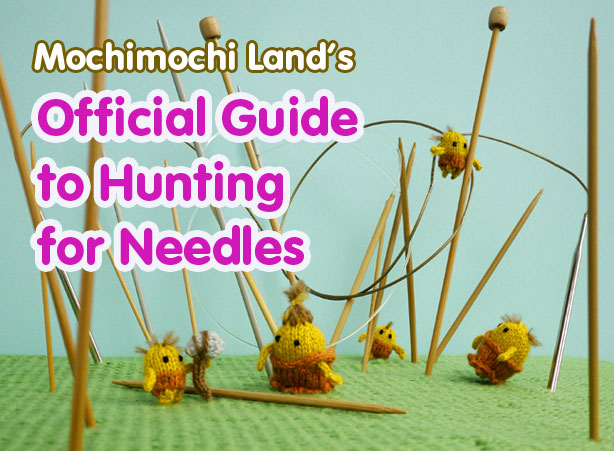
Skip a size (or 3)
The number-one needle rule when knitting toys: choose a needle that is 2-3 sizes smaller than what is normally recommended for the type of yarn you are using. This is so that you will have a tighter than usual gauge, which will prevent the stuffing inside your toy from showing through between the stitches. (Nobody wants unsightly stuffing to show!)
Most yarn comes with a recommended needle size on the wrapper when you buy it. (The Craft Yarn Council also has a chart showing recommended needle size by yarn weight.) Whether you’ll have better results if you go down 2 sizes or 3 depends on your personal knitting style—some people naturally knit more tightly than others.
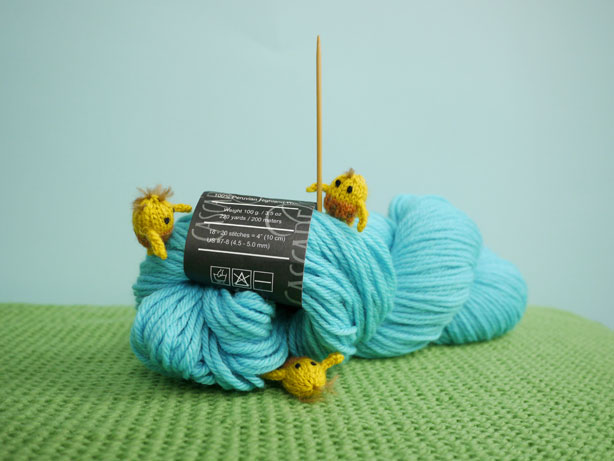
The good news is that, unless you’re knitting a toy that has a wearable aspect to it, or you have some other reason for wanting a toy to be a particular size, you don’t need to check gauge, and you can use pretty much any type of yarn—with the appropriate-sized needles, it’s going to be adorable!
Now that you’ve figured out what size of needles to use, let’s talk about what type to use.
Double-Pointed Needles (DPNs) do the small stuff
I knit the vast majority of my toys on double-pointed needles, which look like what they sound like: needles with points on either end.
Double-pointed needles (DPNs, for short) have a lot of versatility, but they’re best for knitting pieces with small circumferences—anything from tiny tubes to tube socks. The most common way to use DPNs is to have 3 of them holding your stitches in a triangular configuration, and to use a fourth needle to knit with. (It looks way more complicated than it is—check out my DPN tutorial if you’re new to them.) DPNs are also essential for knitting I-cords, a technique that I use frequently in my designs, and you can also use them for knitting small flat pieces.
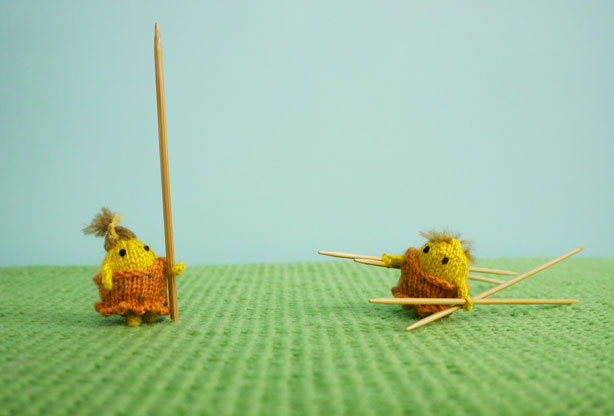
The number-one mistake that people make when using DPNs for the first time: choosing DPNs that are too long and too heavy. The length of DPNs you should use depends on how the size of a project you’re working on, but as a general rule, you should use shorter, lightweight DPNs. Especially when knitting tiny toys, your DPNs should be no longer than 5″ (12.5cm). The longer (and heavier) the needles, the more likely that they will accidentally flip around (twisting your stitches in the process) and get tangled with your yarn.
As for what the needles should be made of, my own preference is for bamboo or wood. I like the weight and flexibility of those materials, and their smooth-but-not-slippery quality makes knitting easy and makes it less likely that your stitches will slip off the needles by accident.
Basically, you can knit all but my very biggest designs using just DPNs. But there are reasons why you may often want to use a circular needle instead.
Circular Needles wrangle your stitches
A circular needle is like two double-pointed needles that are connected together by a long cable, which is usually made of plastic. Because you can fit lots of stitches onto that cable, a circular needle is ideal for knitting pieces with larger circumferences, like the toys in my upcoming book Huge & Huggable Mochimochi. The configuration of the stitches on a circular needle is simple: you knit from one end of the needle to the other in a continuous spiral.
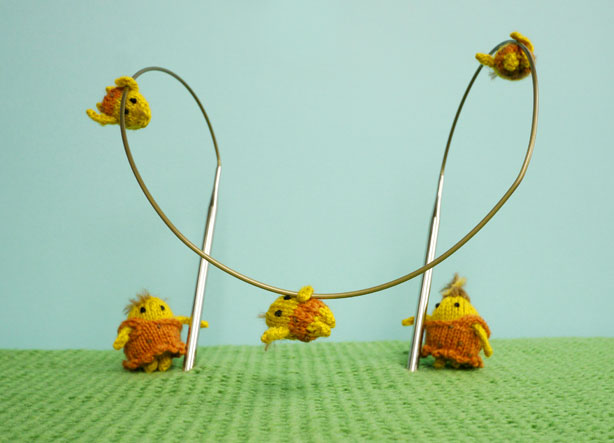
A circular needle can also be used for almost all projects that you would normally use DPNs with. The magic loop technique allows you to knit smaller pieces without DPNs, which is a good option for portable knitting and for people who simply don’t like using DPNs. And one final use for a circular needle: knitting any big, flat pieces. (Many knitters prefer using a circular needle to the traditional pair of straight needles.) Basically the only thing that a circular needle can’t do well is I-cord.
Choosing the right length of circular needle can be tricky, but keep in mind that if you know magic loop, you’ll never have the problem of too long a needle. A very long needle can be cumbersome, though, so I wouldn’t usually recommend the longest sizes available, nor the shortest. A needle that is 24″-40″ (70cm-101cm) will work for most projects.
I have less of a preference when it comes to the materials of my circular needles: I use both metal and wood, and both have served me well. There are also interchangeable sets available if you use them frequently. (Myself, I just have a tangle of different sizes crammed into a drawer.)
Straight Needles shine with intarsia
The conventional pair of knitting needles is something that you’ll rarely see in my hands. They’re probably still the best tool for beginners learning to knit, and I like to use them when I’m knitting medium-sized pieces that incorporate intarsia color knitting. This is because with intarsia knitting it’s important that your stitches are evenly spaced along the needle. But you can also use a circular needle whenever straight needles are called for, so I suggest skipping the straight needles unless you’ve already got them.
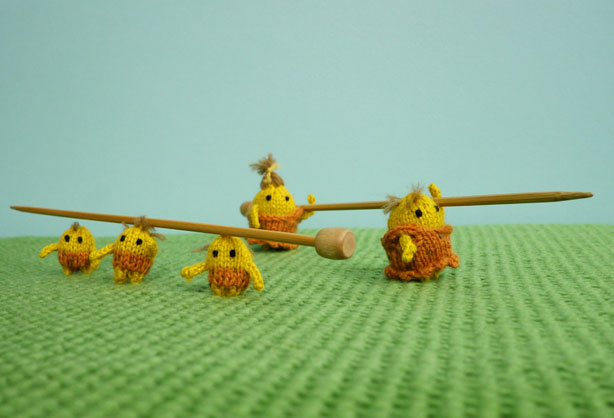
I think I’ve covered all the major needle know-how, as it applies to knitting mochis. Please leave a comment if you have a question that I didn’t cover, or if you have some advice of your own that you’d like to pass along!

